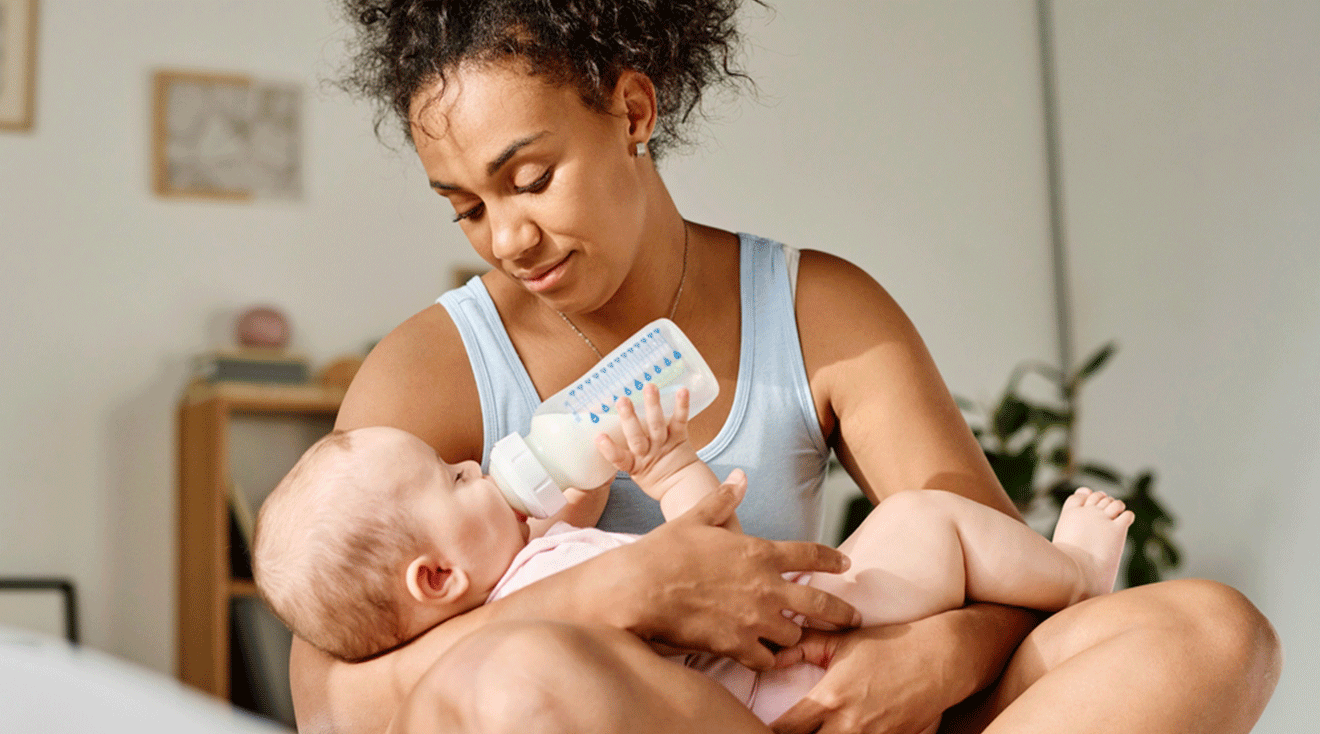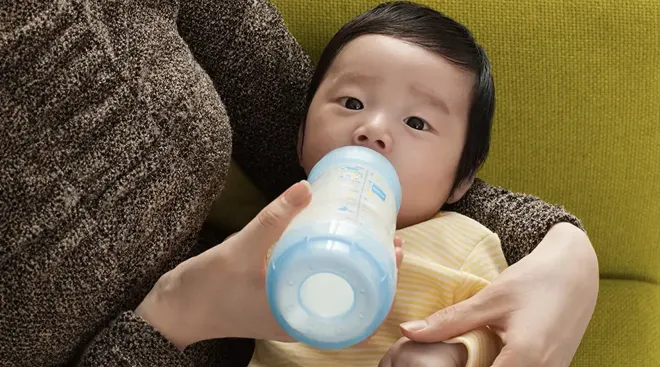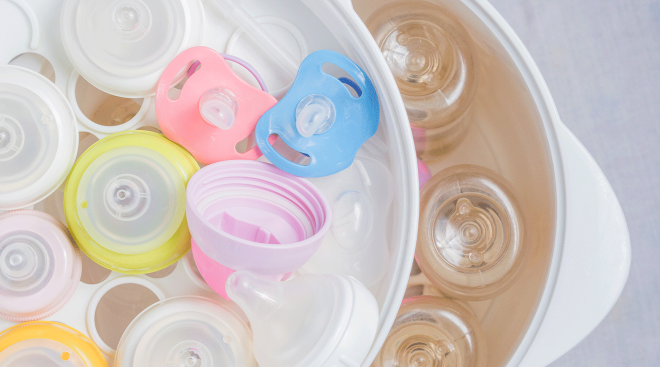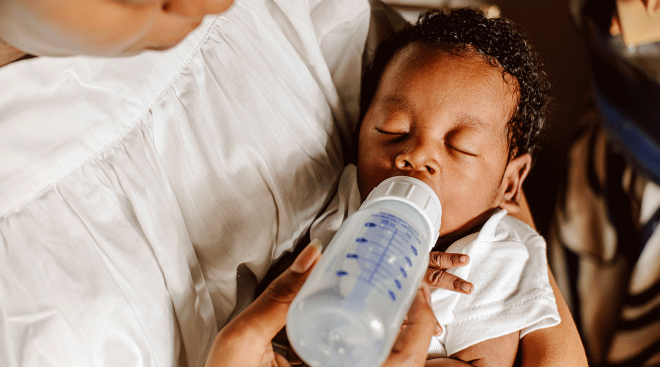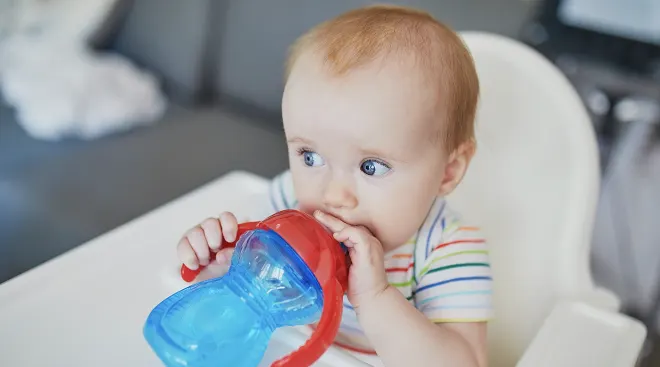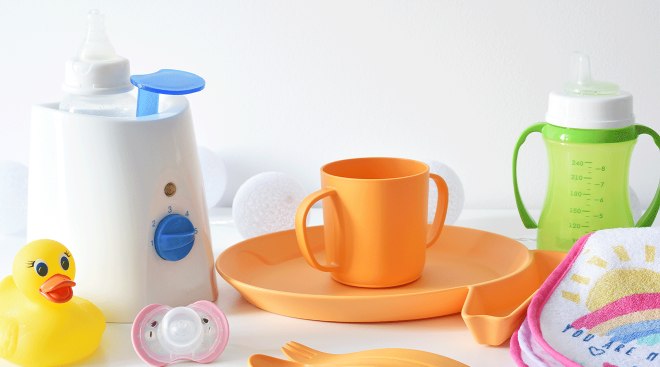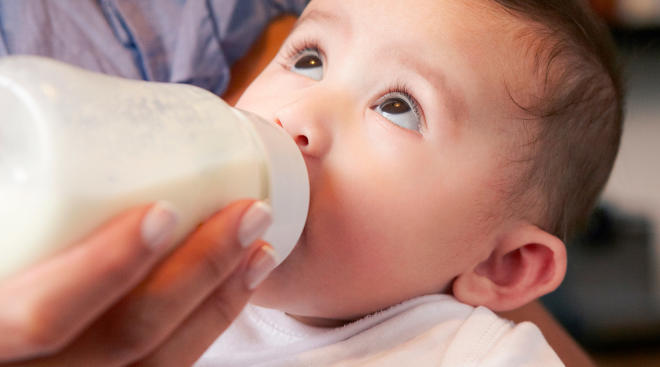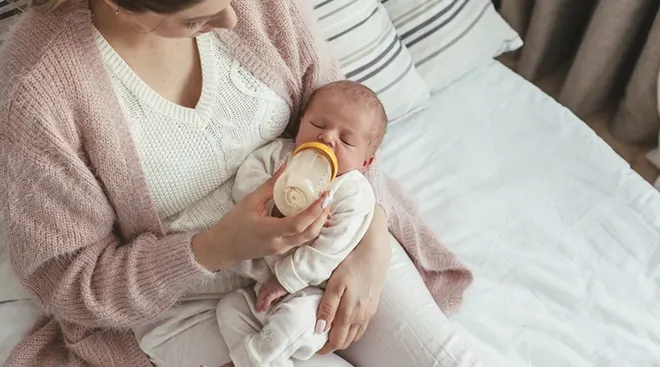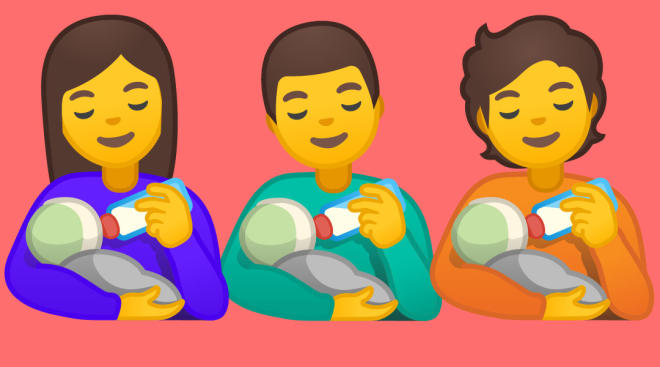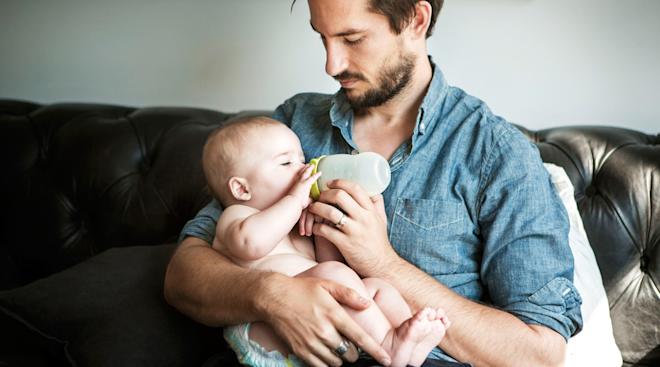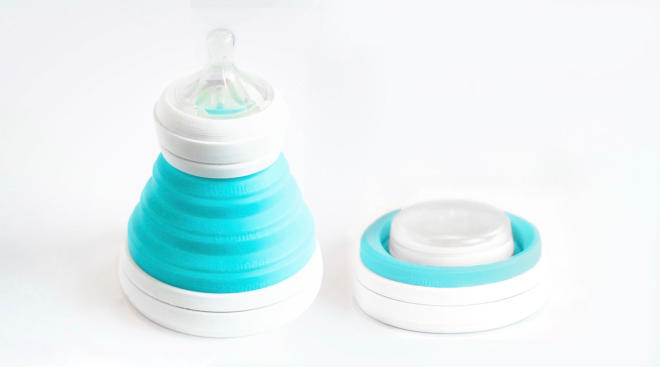How and When to Introduce the Bottle to a Breastfed Baby
There’s no one-size-fits-all approach to introducing a bottle to baby when you’re breastfeeding. Exactly when to start bottle-feeding is a personal choice, but it helps to arm yourself with useful information in any case.
After all, it’s not always an easy process: Mom-to-mom, I’ve felt quite a bit of distress when my breastfed baby refused to take the bottle. Of course, there are times a breastfeeding person needs to step away for a chunk of time, pass off a nighttime feeding or the obvious—go back to work. So how do you get a breastfed baby to take the bottle? Read ahead for expert advice.
There’s little concrete medical data about the best time to introduce the bottle to a breastfed baby. That’s why parents will often hear well-meaning but unhelpful advice on the topic: “Choose what timing works best for you and your family.” Vague and frustrating, right? While advice will vary from expert to expert based on their observations, personal experiences and biases, the general consensus from lactation consultants seems to be to offer a bottle daily by about 4 weeks of age.
Advice about waiting longer to introduce the bottle is based on the idea that doing so too soon could cause “nipple confusion,” or a preference for the bottle over the breast. However, in a 2015 systematic review of medical literature related to nipple confusion, researchers found no evidence that offering the bottle caused baby to stop breastfeeding. They hypothesized that in babies who ultimately preferred bottle-feeding, there could have been underlying issues that would have caused breastfeeding challenges regardless. In a baby who’s breastfeeding as expected, this shouldn’t be a concern.
There are quite a few expert tips and tricks for how to introduce a bottle to your breastfed baby:
Offer a practice bottle every day
The collective wisdom of the lactation world suggests that offering the bottle consistently—at least once a day—can promote bottle-feeding success. It’s important to keep this up daily “because babies love to decide they suddenly don’t like bottles when it’s been a few days since they had one,” says Paula Norcott, IBCLC, a lactation consultant at Maine Mother + Company and with Baby Buddha, a compact breast pump company. When offering the bottle, keep baby in a mostly upright position, hold the bottle at a slightly tipped-up angle and offer intermittent burp breaks.
Leave the premises
When baby’s too close to the “milk factory,” they’ll likely want to drink what’s on draft. “It’s possible baby may not take the bottle if the breastfeeding parent is home!” says Laura Varghese, BSN, RNC, IBCLC, a lactation consultant and nurse case manager at Elliston Pediatrics in New York. Once a week, leave the house while a partner or another caregiver offers baby a bottle. Visit a friend, go to a movie by yourself (delightful), get a pedicure—use the time for some self-care.
Offer the bottle when baby isn’t overly hungry
Babies tend to be more open to new things when they’re in a calm and semi-satiated state. Choosing a time between normal feeding times could be a good way to ensure openness to trying a bottle. “Offer a snack-sized amount—a smaller amount of 1 to 2 ounces—when baby is ‘not quite’ hungry,” says Martha Lasley, BSN, RN, IBCLC, a lactation consultant and the nursing operations manager for maternal education at Winnie Palmer Hospital for Women and Babies in Orlando.
Go at your own pace
Many lactation consultants recommend paced bottle-feeding, or bottle-feeding in a controlled way that mimics the breastfeeding experience. However, Norcott says it’s best to try this only after bottle-feeding has been well-established: “Don’t worry about paced feeding until baby is accepting milk from a bottle at all.” When you start this, Lasley suggests helping baby “pace the feeding by holding the bottle horizontal to the mouth with a slight tip to keep the nipple full.”
Keep the environment calm
Varghese recommends offering the bottle “in a calm, low-stress, low-pressure setting.” Introducing a breastfed baby to a bottle can be stressful, and it’s hard to problem-solve when we’re stressed. Be mindful of your emotional state when introducing the bottle.
Give baby the bottle nipple outside of feeding times
Let baby touch and mouth the bottle nipple outside of feeding times so they can get used to the sensory experience. “Separate the collar and nipple from the bottle and introduce it to your baby as something to explore and play with a couple times a day for a few days. This’ll help familiarize baby with it,” says Varghese.
Find the right nipple shape for baby’s mouth
Sometimes the shape or flow of a bottle’s nipple is not a good fit for baby, so experiment with what baby bottles work for yours. Melinda Cockeram, IBCLC, a lactation consultant and breastfeeding educator of 15 years, says, “If the nipple is too long, baby will gag or choke. If it’s too short, they’ll struggle to milk it. Measure their oral reach—from the top back part of the palate to lips, with your finger—and find a nipple that fits best.” You may have to try a few bottle brands, which can unfortunately add up, but the payoff might be worth it.
If at first you don’t succeed, troubleshoot
If baby’s not taking the bottle right away, don’t be afraid to get creative. Norcott has you covered with a Dr. Seuss-like list of ideas: “Try the bottle when they’re sleepy, try it when they’re awake. Try the bottle warm, try it cold. Try the bottle when they’re hungry, try when they’re full. Try the bottle indoors, outside… while they’re watching a sibling and distracted… Use your imagination.” She adds that you can try offering the bottle several times a day as long as you keep the vibe calm and pressure-free.
Consult a professional
Enlist the help of a trusted expert if you’re having challenges introducing the bottle to your breastfed baby. We’re biologically wired to care deeply about our babies’ milk intake, so when things are going wrong with bottle-feeding, breastfeeding or both, it can be especially concerning. Lasley suggests reaching out to a lactation consultant for help and adds, “If baby has weight loss or slow weight gain and difficulty persists, visit your pediatrician and consult with a pediatric occupational or speech therapist.”
Offer an older baby a sippy cup
If all else fails, there will come a time when the bottle is no longer the only breastfeeding alternative. At 6 months old, most babies can safely start taking a sippy cup, according to the American Academy of Pediatrics (AAP).
Combining breastfeeding and bottle-feeding can be a delicate dance, and research on introducing the bottle to a breastfed baby has a long way to go. Be gentle with yourself on this journey, and if it’s harder than you’d hoped, remember: You’re not alone, and this too shall pass.
Please note: The Bump and the materials and information it contains are not intended to, and do not constitute, medical or other health advice or diagnosis and should not be used as such. You should always consult with a qualified physician or health professional about your specific circumstances.
Plus, more from The Bump:
Melinda Cockeram, IBCLC, is a lactation consultant and breastfeeding educator of 15 years. She’s based in Redlands, California.
Martha Lasley, BSN, RN, IBCLC, is a lactation consultant and the nursing operations manager for maternal education at Winnie Palmer Hospital for Women and Babies in Orlando.
Paula Norcott, IBCLC, is a lactation consultant at Maine Mother + Company and with Baby Buddha, a compact breast pump company.
Laura Varghese, BSN, RNC-OB, LRN, MNN, IBCLC, is a lactation consultant and nurse case manager at Elliston Pediatrics in New York.
La Leche League USA, How to Introduce a Bottle to a Breastfed Baby, February 2020
Journal of Perinatology, Clarifying Nipple Confusion, July 2015
Healthy Children (American Academy of Pediatrics), From Bottle to Cup: Helping Your Child Make a Healthy Transition, July 2023
Learn how we ensure the accuracy of our content through our editorial and medical review process.
Navigate forward to interact with the calendar and select a date. Press the question mark key to get the keyboard shortcuts for changing dates.
































